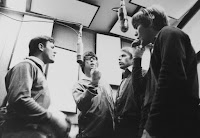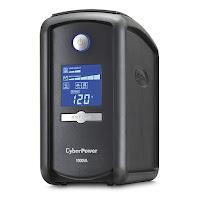Most musicians who play club gigs in the United States don't belong to the Musicians Union since they don't feel that it has much to offer them. While that may or may not be the case, everything changes when you're working on a union gig for record label or a symphony orchestra, because that's where the union guarantees a reasonable wage rate and demands that your employer contributes to the union pension fund.
But what happens if you're a producer who wants to hire a union player? It isn't as easy as saying, "I'll give you $75 to play the session," because things don't work like that once you've crossed the realm into union territory. Here's an excerpt from my
Music Producer's Handbook that explains just some of the ins and outs of hiring union session players.
"It costs a lot more money to hire musicians that work under the
American Federation of Musicians (AFM) union rules than ones who don’t. Not only is the pay generally higher for working a shorter session than non-union players, but you also have additional costs that go beyond what the player gets directly, which we’ll cover in a bit. What’s more, union rates can be somewhat of a maze since different scales cover different situations, rates are renegotiated every few years, and pay scales vary from union local to union local (not that much, but they do vary).
Generally, the union pay scales for recording are based on 3 hour sessions and are broken down as follows:
Demo Scale - This means that whatever the musicians play on is only used to secure a master record deal and can’t be sold commercially. This is the least expensive (to the producer) of all the scales. Demo scale is a relic from a time when demos were a necessity to take your project to a higher level in the business, and even though it’s still on the books, this scale is outdated since any recording is so easy to release commercially.
Limited Pressing Scale - Another relic of the past thanks to digital music, the limited pressing scale allows the producer or label to make and sell up to 10,000 copies of anything the musicians play on. The limited pressing scale pays a bit more than the demo scale.
Low Budget Scale - The low budget scale was originally created to help small indie record labels who never had the large recording budgets that were typical of a major label product. The key here is that the budget needs to be submitted to the union for approval in advance before you can play on it, but the label can sell as many copies of the product as they can.
Master Recording Scale - This is the scale used to pay musicians to record a typical medium or big budget master recording for a major record label. It’s the highest paying scale with the most perks.
Jingle Scale - The jingle scale is a little different in that most jingle (commercial music) sessions are so short that everything is based upon a single hour pay with 20 minute increments. The number of jingles that can be recorded in that time period is limited to 3 (or 3 minutes of music), or else you must pay the musicians for another session. The musicians also get payed again for every 13 week run that the commercial stays on air (but it doesn’t come out of your budget). The musicians also get paid again if the producer takes the music bed that you played on and creates an additional commercial (called a dub fee) or a new commercial (called a conversion fee).
Motion Picture and Film Scales - This is a dizzying array of scales for orchestral recordings that vary depending upon the size of the orchestra and budget, and whether the performance is a “buy-out” (you only get paid once for the original performance) or if you’ll get paid for subsequent performances.
Additional Fees
There are other fees that must be paid under certain circumstances on a union date.
• The leader is always entitled to twice the scale rate regardless of what kind of session and which rate scale you’re using.
• If a musician doubles on a second instrument during the session, he will make an additional 20-30% (depending on the type of session and scale), and an extra 15-20% for each additional instrument played.
• And in some cases, he may even get an additional payment for cartage of large instruments like $12 for cello, baritone sax, bass sax, contra-bass clarinet, tuba, drums, marimba, chimes, accordion, Cordovox, and each amplifier, and $30 for harp, keyboard, tympani, vibraphone, and bass.
• Besides the hourly scale amount, the producer will also contribute another 12% or so to the musician’s union pension fund, an additional 3% to his health and welfare fund, and in some cases, 4% more to a vacation fund.
As stated before, the scales and rates are subject to change every few years, so it’s best to check with your union local to find out exactly what those rates are today. This section is only just a thumbnail of the detail as well, so check for all the particulars that might apply to your specific session well in advance of the downbeat, and make sure that the session leader or contractor (who files the paperwork) is on the same page as you.
Here’s a list of the major media center’s union locals and websites:
New York City Local 802
Los Angles Local 47
Nashville Local 257
Chicago Local 10-208
Hiring Union Players
The best way to ensure that you get exactly the players you want, stay within the confines of the union, and have all the paperwork filed, is to hire a union contractor who will put the appropriate players together for you. If you need a horn or string section, a single call to a contractor will get you the players you need, instead of having to assemble the section yourself (which can be hit or miss as to the quality of players if you’re not familiar with them).
The contractor acts as a go-between for musicians and producers, and is required to be present at all times during the session when his contracted musicians are recording. Contractors come in two varieties: union and independent. Both are usually musicians themselves who supervise and provide additional services for a session. A Contractor can help musicians and singers prepare by supplying them with the necessary information for the session, and making sure that they and their specified instruments and equipment arrive at the event or session on time. He coordinates the event, coaches, conducts, computes session fees, and submits the proper union forms (if it’s a union date) to the employer and union office.
It is not uncommon for contractors to specialize in a specific area of the business like jingles, orchestral dates, or film/television sessions. For a contractor, it’s all about relationships. His or her reputation is founded on the experience level and quality of the musicians he or she makes available, so it really makes sense to cultivate relationships with the local contractors."







